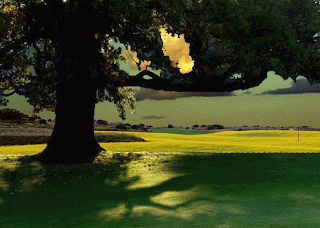Owls. These enigmatic avian creatures, with their haunting calls and piercing gazes, have captivated human imagination for millennia. They transcend mere biological classification, morphing into potent symbols imbued with a rich tapestry of cultural meanings. Examining these diverse interpretations unveils a fascinating compendium of human beliefs, fears, and aspirations.
The Embodiment of Wisdom and Knowledge: Across numerous cultures, owls are inextricably linked to wisdom and intellectual prowess. The ancient Greeks, for instance, revered the owl as a sacred companion to Athena, the goddess of wisdom, strategic warfare, and crafts. This association cemented the owl’s position as a symbol of erudition and insightful perception. Their nocturnal habits, lending them an air of mystery and contemplative solitude, further reinforced this connection to the pursuit of knowledge.
A Harbinger of Death and Transformation: However, the owl’s symbolism isn’t uniformly positive. In many cultures, particularly those with deep-rooted shamanistic traditions, the owl is viewed as an ominous harbinger of death and transformation. Its silent flight and nocturnal presence evoke associations with the spirit world, blurring the boundaries between the living and the deceased. Certain Native American tribes consider the owl a psychopomp, guiding souls to the afterlife. This perspective isn’t necessarily negative; rather, it acknowledges the cyclical nature of existence and the inevitability of transition.
Guardian of the Underworld and Secret Knowledge: Delving deeper, the owl often acts as a guardian of the underworld or keeper of secret knowledge. Its ability to see in the dark, a unique physiological adaptation, translates metaphorically to the ability to perceive truths hidden from ordinary sight. In some folklore traditions, owls are said to possess access to arcane wisdom, guarding the gateways to hidden realms and esoteric knowledge. This role elevates them beyond mere observers, positioning them as active participants in the unraveling of mysteries.
A Symbol of Protection and Guidance: Conversely, the owl can also embody protective qualities. For some indigenous cultures, the owl serves as a totem animal, offering guidance and safeguarding against malevolent forces. This perspective underscores the dualistic nature of the owl’s symbolism; it can represent both the potential for harm and the capacity for benevolent intervention. The specific interpretation often hinges on the context of the culture and the individual’s personal beliefs.
Interpreting the Owl’s Hoot: The owl’s distinctive hoot plays a significant role in shaping its symbolic meaning. In some cultures, the sound is considered a portent of misfortune, a warning of impending doom. The melancholic and somewhat eerie quality of the hoot contributes to this association with negative omens. Conversely, in other traditions, the hoot is interpreted as a sign of good luck or a message from the spirit world. Deciphering the meaning of the owl’s call depends heavily on the cultural lens through which it’s perceived.
Owls in Literature and Art: Throughout the annals of literature and art, owls have consistently appeared as evocative symbols, enriching narratives with layers of meaning. From Shakespearean tragedies to contemporary fantasy novels, the owl’s presence often signals themes of wisdom, mystery, or impending change. Artists, too, have been drawn to the owl’s enigmatic allure, incorporating it into paintings, sculptures, and other artistic expressions. These representations further solidify the owl’s position as a culturally resonant symbol.
The Owl as a Metaphor for Intuition: Beyond its association with intellect, the owl also serves as a potent metaphor for intuition. Its ability to navigate the darkness and perceive subtle movements reflects the power of intuition to guide us through uncertainty and reveal hidden truths. Embracing the “owl within” encourages us to trust our instincts and cultivate a deeper connection to our inner wisdom. This interpretive lens transcends cultural boundaries, offering a universal message of self-reliance and intuitive awareness.
Modern Interpretations of Owl Symbolism: Even in the modern era, the owl retains its symbolic power. It continues to be a popular motif in art, design, and popular culture, often representing intelligence, creativity, and a connection to the natural world. The owl’s enduring appeal lies in its multifaceted nature, capable of embodying both positive and negative attributes. This ambiguity allows for a wide range of interpretations, ensuring that the owl remains a relevant and compelling symbol for generations to come.
In conclusion, the owl’s symbolism is a complex and captivating reflection of human perceptions and beliefs. Its association with wisdom, death, protection, and intuition underscores its profound impact on cultures worldwide. By unraveling these diverse interpretations, we gain a deeper appreciation for the power of symbolism and the enduring allure of this remarkable avian creature.
